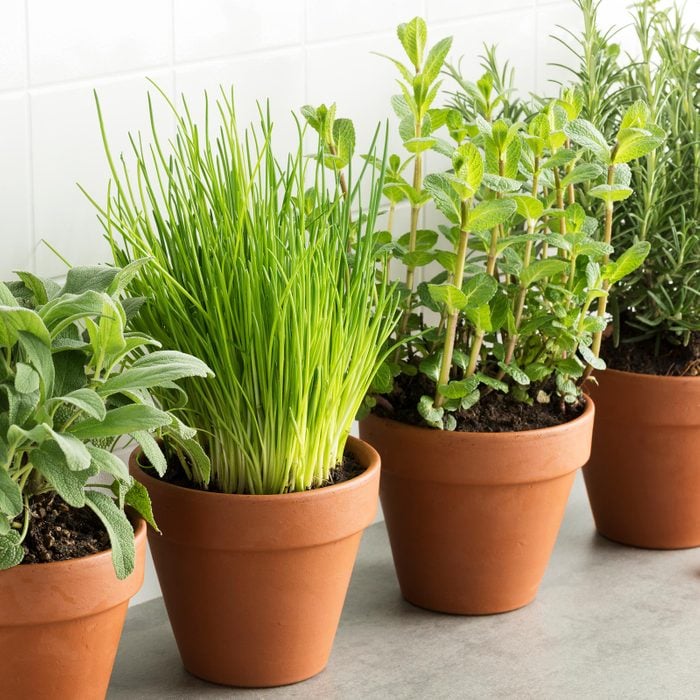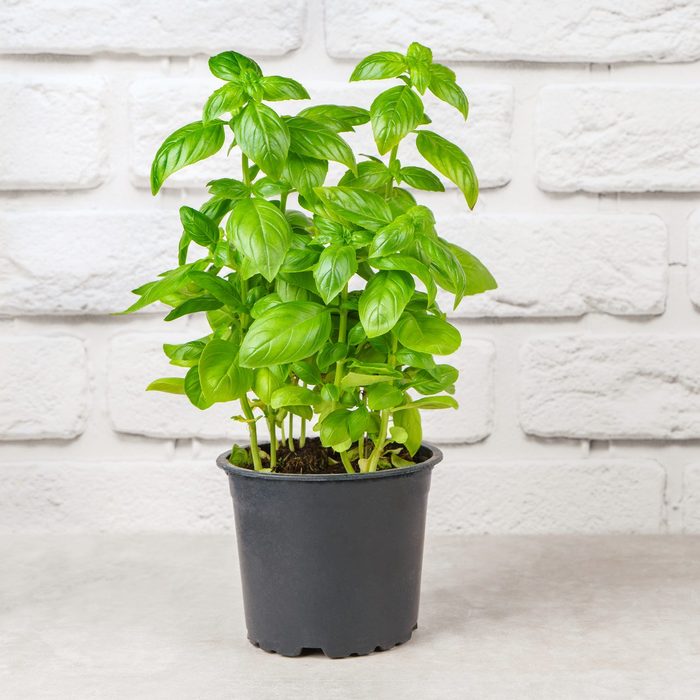
Basil
Basil is one of the very best herbs to have on hand. Add it to caprese salads and pizzas or use it to make a bright batch of pesto. Grow basil from seed or a starter plant from the garden center. Plant it in well-drained soil in a bright, warm spot and pinch back any flowers. To harvest, cut a few stems just above where two leaves meet. Use it in any of these fresh basil recipes.
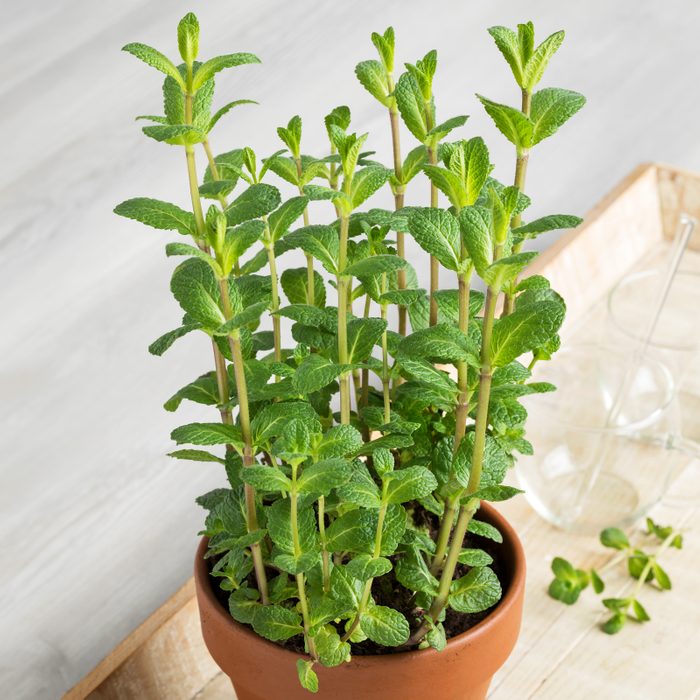
Mint
Mint is a natural choice for container gardening as it can run wild when planted outdoors. Give your indoor mint rich soil and frequent waterings. There are quite a few varieties of mint—and many more ways to use them: spearmint is wonderful in savory recipes and mojitos, while chocolate-mint and apple-mint are great in desserts. Peppermint is refreshing in candies and ice cream—and it makes a lovely tea!
Psst! Check out our AeroGarden review—we’re in love with this high-tech gadget for indoor gardening!
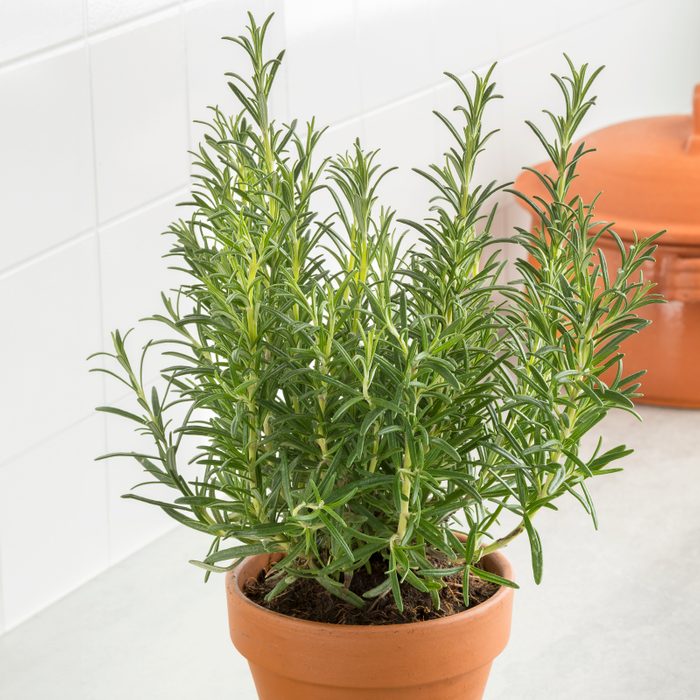
Rosemary
Rosemary is a sturdy, shrub-like herb that grows very well indoors. It does best in the same growing conditions as basil, so you can even plant them together. Snip a few stems anytime to add rich, piney flavor to recipes. Rosemary is also easy to dry, so you’ll never need to buy the pre-packaged stuff again. Use your fresh pickings in these rosemary recipes.
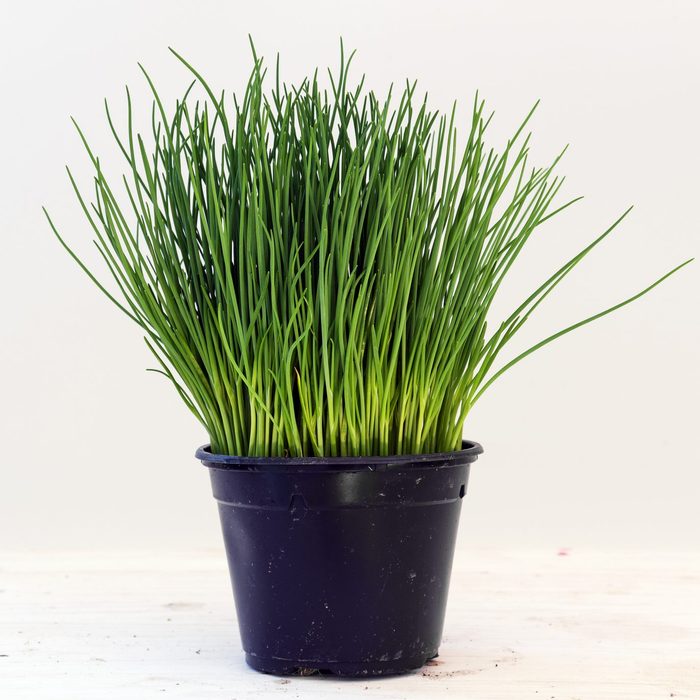
Chives
Don’t overpay at the grocery store for a tiny package of cut chives—they’re easily one of the best herbs to grow indoors! Sow seeds directly in a pot placed in the sunniest spot in your house. Keep a tray of pebbles and water under the pot to give the plant extra moisture. Find some inspiration for cooking with fresh chives.
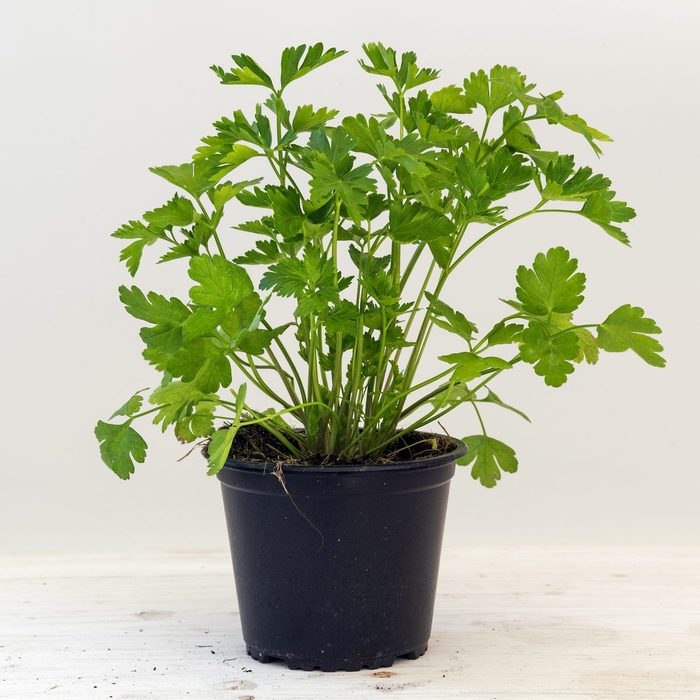
Parsley
With parsley growing indoors—in lightly moistened soil near that sunny window—and available anytime, you’ll find yourself coming up with tons of ways to use parsley: make a parsley butter to add to grilled meats, mince and stir the leaves into cooked rice or whip up a batch of spicy chimichurri sauce!
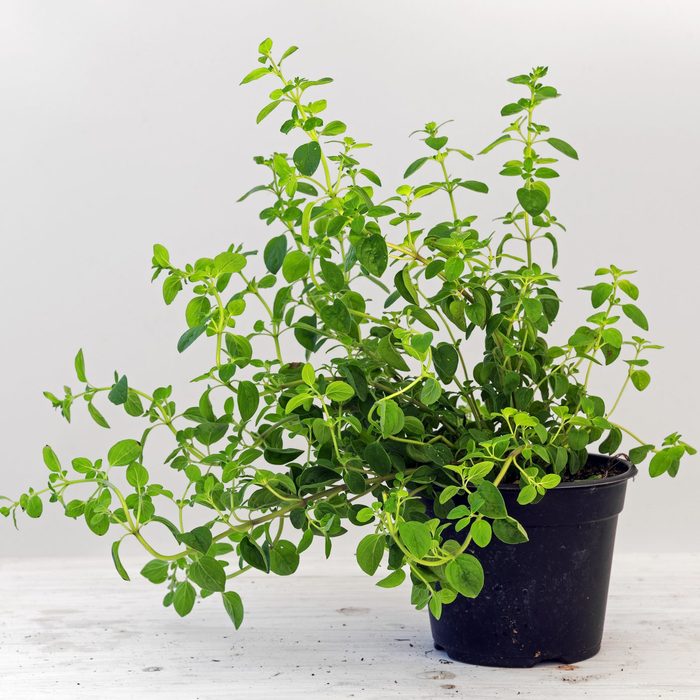
Oregano
Oregano is a surprisingly easy and hardy herb to grow, and the fresh leaves have a beautiful scent. It can be companion-planted with sage as they like the same growing conditions. Use your fresh oregano leaves in a potato side dish or a batch of homemade spaghetti sauce.
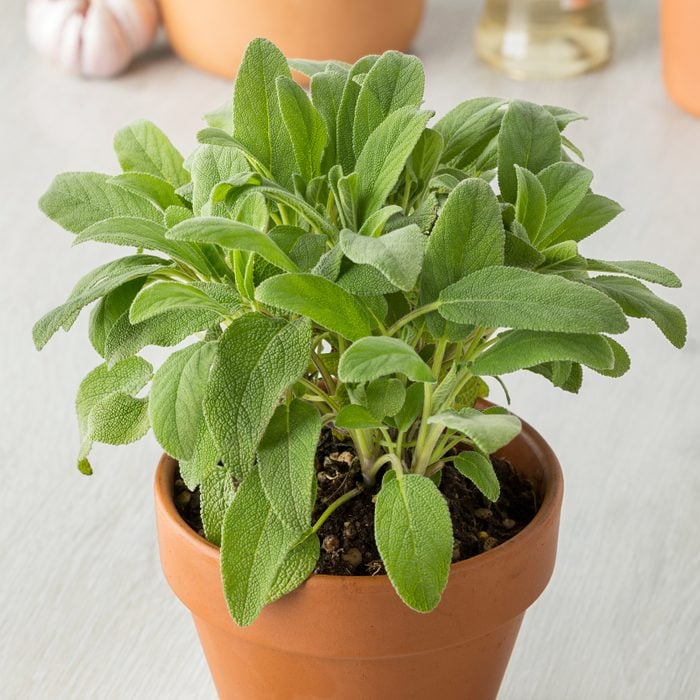
Sage
The herb that gives that wonderful flavor to Thanksgiving stuffing and savory sausages is a nice addition to an indoor herb garden. Sage does need a lot of sunlight (six to eight hours a day) but if you have that sunny spot, this is a fabulously easy herb to grow. Don’t forget to check out this list of vegetables to grow in your indoor vegetable garden.
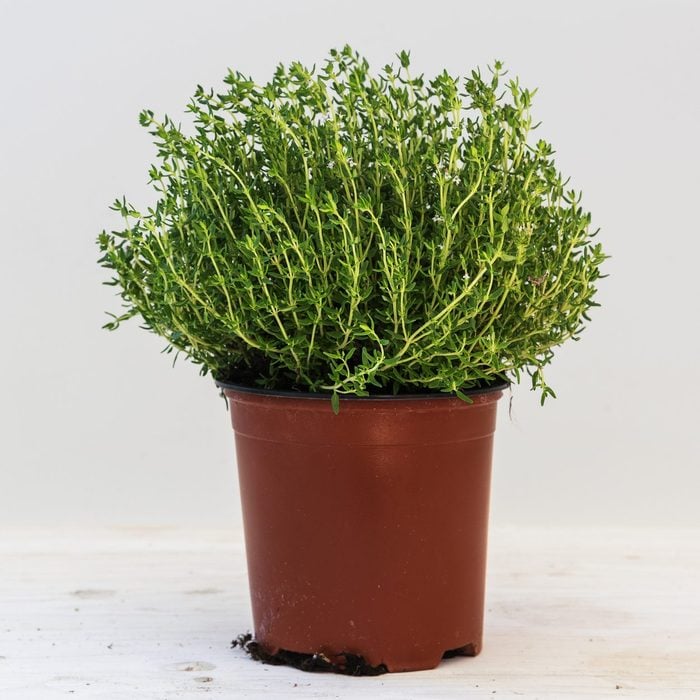
Thyme
In addition to being a beautiful indoor plant, fresh thyme is so much more fragrant and potent than dried. Give it a sunny spot and well-drained soil that can dry between waterings. You can grow the regular variety of thyme or lemon-thyme for a bright, citrusy flavor that’s delectable with roast chicken.
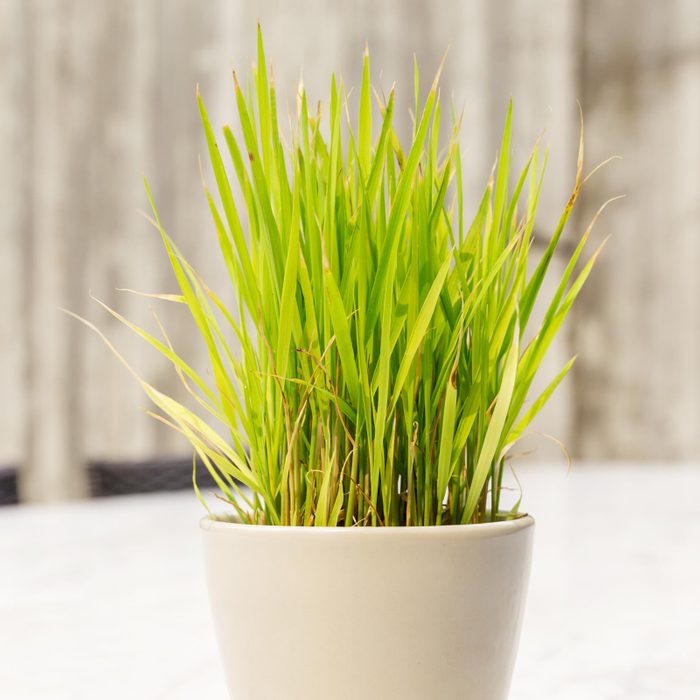
Lemongrass
It may not be your first thought for indoor herbs, but if you have some space and a big pot, fragrant lemongrass is a great choice. You can even grow it using stalks bought at the store! Keep it well-drained and in a sunny spot. When you need some, cut off a stalk close to the soil. It’s one of the best spring herbs to cook with, and can be used in chicken dishes and marinades.
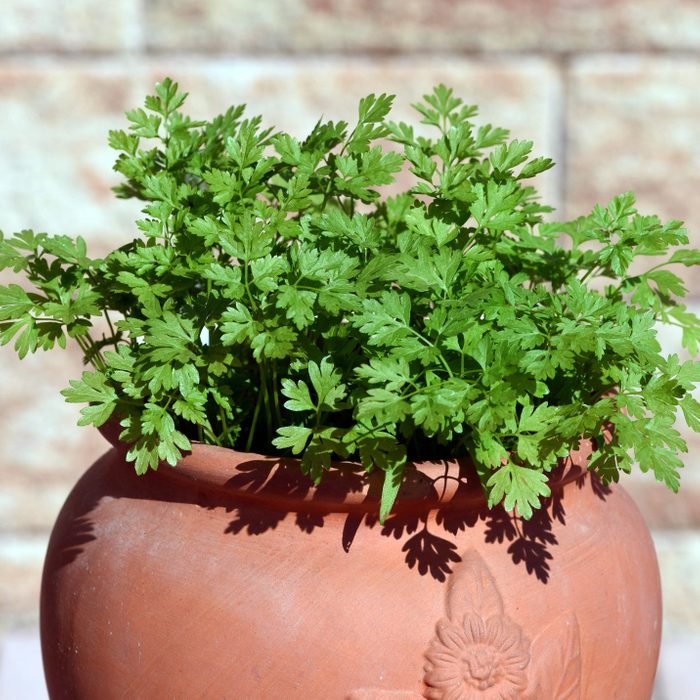
Chervil
This herb is one of four in the classic French blend, fines herbes. To grow chervil, plant the seeds directly in the container. Once grown, trim the chervil back often to keep it from bolting. Chervil’s delicate flavor is lovely when added to salads, roasted chicken, vinaigrettes and egg dishes.
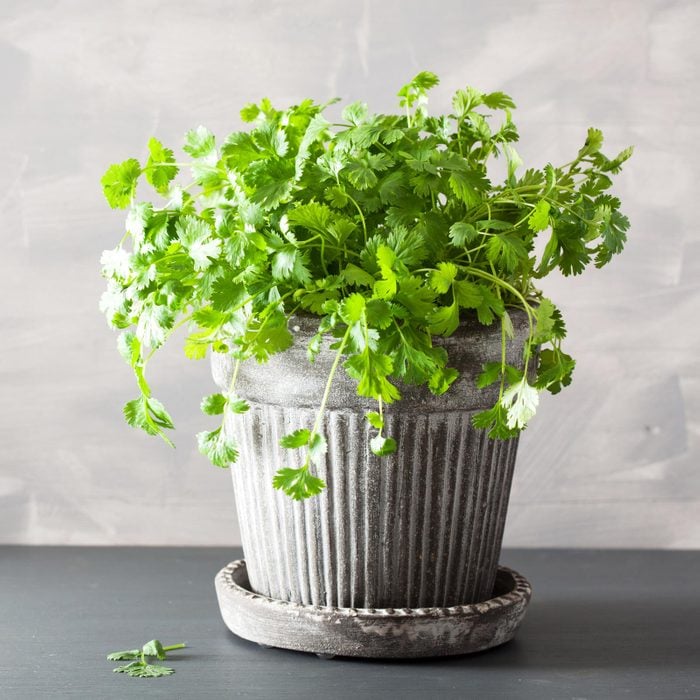
Cilantro
This herb is a must-have for cuisines from all over the world: Mexico, South America, Africa, Europe, the Middle East and Asia. Start cilantro seeds indoors; press them into moist, rich soil in a container with drainage holes. Keep cilantro well-watered, and pinch the plants back often to prevent bolting. Add chopped cilantro to salsas, pesto and pasta sauces, and as a fresh garnish to soups like pho. Sprinkle the herb over finished dishes like chili, enchiladas and shakshuka.
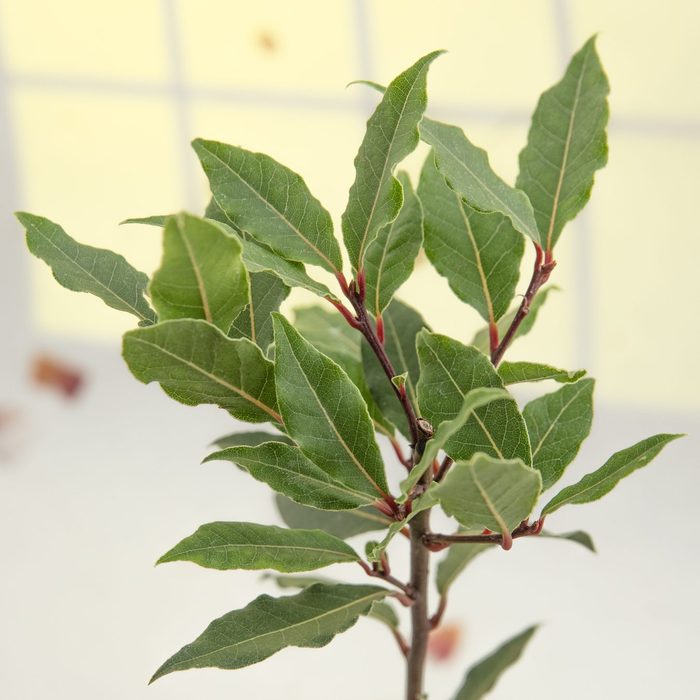
Bay
Bay leaves add subtle herbal and floral notes to sauces and soups. Sadly, the jar hiding in the spice cabinet is probably ancient, and the leaves inside brittle and flavorless. When you grow bay laurel indoors, you can pluck fresh leaves anytime to use in recipes or dry them to keep in the pantry.
Bay laurel grows as a shrub; look for established culinary varieties at garden centers in planters that can easily be moved outdoors in warmer months. Keep your bay plants well-watered, and place them by a window where they will receive as much winter sunlight as possible. Bay shrubs are more vulnerable to diseases like scale than other herbs, so check the leaves often for spots or other signs.
Check out our fresh-to-dried herb conversion when using fresh herbs in place of dried.
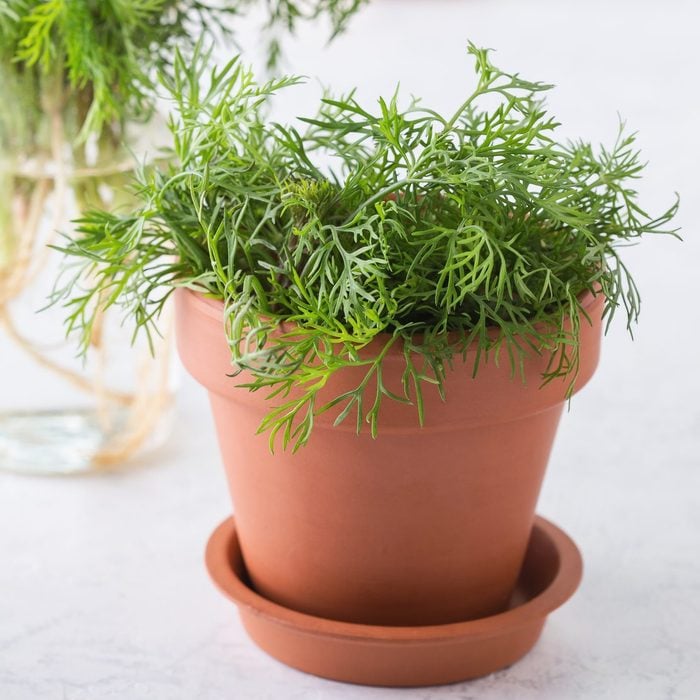
Dill
Fresh dill tastes divine and is also attractive with delicate, feathery stems. Start dill from seed in a draining planter and rich soil, and water the plants often. Dill can very quickly bolt and go to seed, so snip or pinch the stems back often. You’ll find that fresh dill recipes like tuna salad, roast chicken and casseroles will begin to fill your weekly menu. The herb is a must for refrigerator pickles and creamy dips.
Here are the best ways to cook with fresh herbs—dill and others.
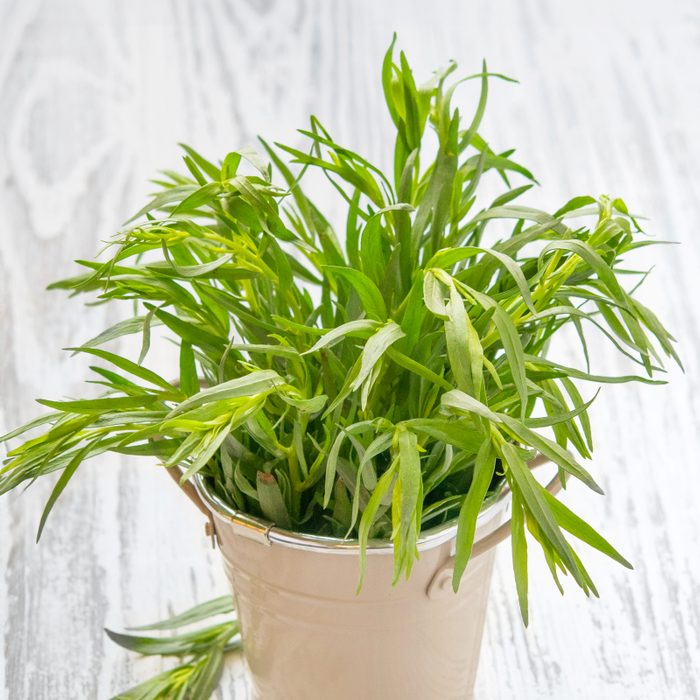
Tarragon
The best reason to grow tarragon indoors is because the flavor of the fresh herb is far better than the dried version. Tarragon is a lightly licorice- and floral-tasting herb that’s part of French dishes like béarnaise sauce, and a favorite flavoring for chicken salad. There are so manty tarragon recipes to love like poached eggs, roast chicken, grilled fish and sauces for steamed vegetables. Growing tarragon is easier to do from plants or cuttings, so check nurseries or online garden centers for live plants or roots to purchase.
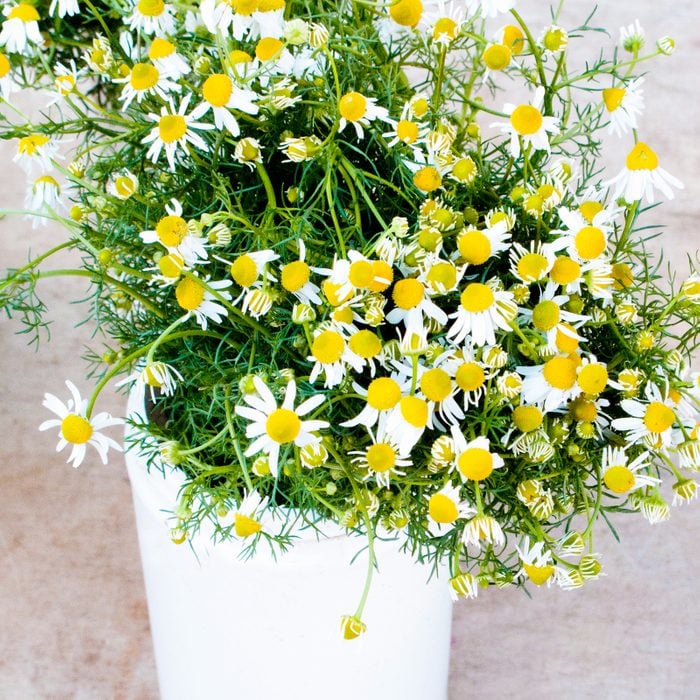
Chamomile
You may not have expected to find a flower on this list, but there are a lot of good reasons to grow chamomile indoors. Chamomile is one of many edible flowers that can be used fresh or dried: The little, daisy-like blooms have a soft floral and apple flavor that is a favorite for herbal tea. And in the cold-weather months when flowers are few and far between, a pot of chamomile in the kitchen is cheery and bright.
Just like with other herbs, chamomile will do best in well-draining soil and placed in a sunny, south-facing window. Dry the flowers for tea, and to flavor simple syrups and dressings. Use fresh flowers to perk up winter salads and to decorate desserts. Freezing herbs, including chamomile, preserves their flavor and color for even longer. Try that hack if you have an overabundance of fresh chamomile.

